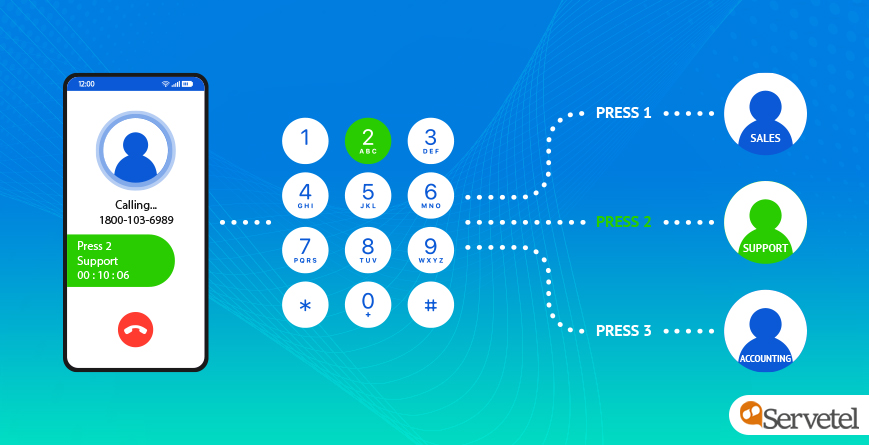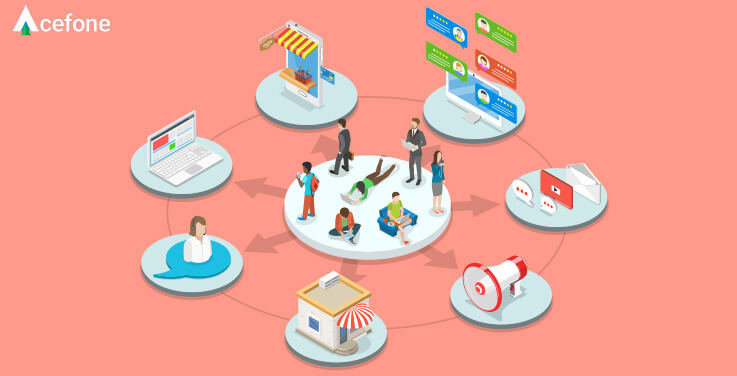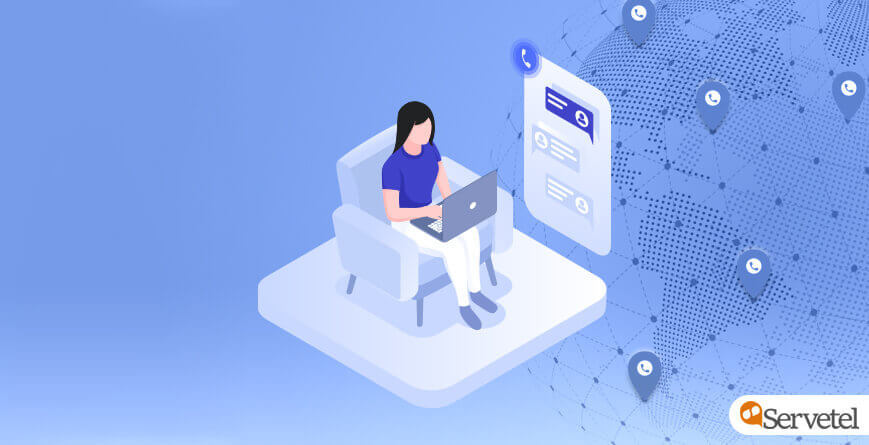Do you have to communicate with customers and answer the same set of questions regularly?
If yes, then Interactive Voice Response (IVR) is what your business needs.
Interactive Voice Response automates the hassle of attending calls manually or answering the mundane question every day. It automatically greets the caller with a pre-recorded welcome message and interacts with the customers through DTMF inputs (generated by your numeric keypad responses). Welcome greeting used in the IVR can be fully customized to include your company’s name and other details.
Most of the leading businesses have started using IVR solution to capture more leads and connect with the customers in real-time. Not only that, but companies are also utilizing this solution to serve other business purposes. Here’s a list of IVR use cases which are already in use by different industries.
1. Receive Customer Feedback
Interactive Voice Response is used as a useful tool to obtain feedback about products or services from the customers. To prompt responses, you can easily design an IVR for your business and ask yes/no or multiple-choice questions. These feedback questions can be easily customized depending upon the product or services.
Collected response of IVR can be further discussed, evaluated and implemented in the next product or service updates. This allows the business to remain at par with customer’s expectations without demanding much effort.
2. Manage Incoming Calls
Companies are using Interactive Voice Response to manage the humungous volume of customer calls. With IVR, these calls from customers can be easily routed to the concerned department for further assistance and query resolution without any human intervention. As IVR replaces human receptionist with virtual receptionist managing calls become a lot easier, cost-effective and efficient.
Also, IVR greets the caller with a pre-recorded welcome greeting and provides the caller with a detailed list of options to choose from. It responds to the customer with dynamically generated audio with the help of text-to-speech feature.
3. Conduct Surveys
Surveys are a priceless tool to measure the service quality. Generally, these surveys are of two type – Inbound and Outbound IVR survey.
- Inbound IVR Survey
In an inbound survey, customer approaches the business with the queries. Once the interaction is complete, the same call gets transferred for a quick survey to evaluate customer satisfaction for the provided assistance. Such surveys give businesses quality feedback as the conversation is fresh in the customers’ minds.
- Outbound IVR Survey
These surveys are routinely conducted to gauge customer’s satisfaction with your product and services. Here an automated call which includes set of questions is sent on the customer’s number. The caller responds to the survey using the numeric input options.
4. Gather Account Information
Interactive Voice Response facilitates the customers by providing account information in no time. It gives customer the opportunity to fetch instant information such as account balance, last five transactions, subscription pack renewal date etc. This service is often used by customers of banking, insurance and financial services.
When the customer calls on the business phone number, IVR responds to the call and presents several options. For instance, if a customer wants to know the account balance or outstanding bill, they can follow the IVR instructions to fetch their account details. It greatly helps customer to gather information of basic queries without any human assistance.
5. Generate Leads
Marketers have started using Interactive Voice Response as an efficient tool to generate leads. Instead of running ads and sending emails to collect contact information, they are using IVR service to attract leads into giving their contact information.
For instance, “Take our survey and avail 50% discount on all our products” or “Call on 9xxxxxx to know more about our product” are few of the lines that can be used to attract relevant leads. At the end of the call, IVR can connect the interested leads with the company representative.
6. Track Orders
E-commerce industry has leveraged Interactive Voice Response intelligently by allowing customers to track the status of their orders through this solution. E-commerce companies allow their customers to call them and know the location and status of their order in a hassle-free manner using Interactive Voice Response solution.
For instance, when a customer calls the company to track order, IVR greets them and asks them to enter their order ID and verification details. After the customer provides the relevant information, IVR fetches the order details from the database and announces it to the caller using the Text-to-Speech feature.
Summing it Up
Setting up an IVR clearly impacts the ROI of the business. Also, it has emerged out to be an essential self-help platform where customers can resolve their queries without interacting with an agent. Due to which a large number of companies have started utilizing IVR for various business purposes. The perfect blend of self-help and talk to company representative options present in Interactive Voice Response has been the key catalyst in the widespread adoption of this solution.














